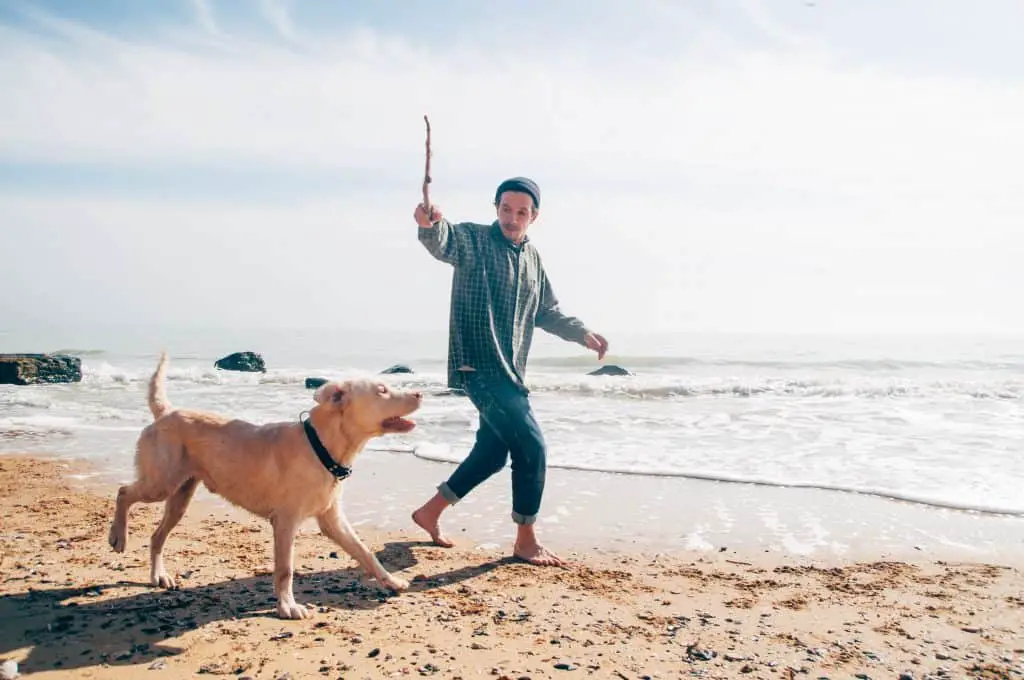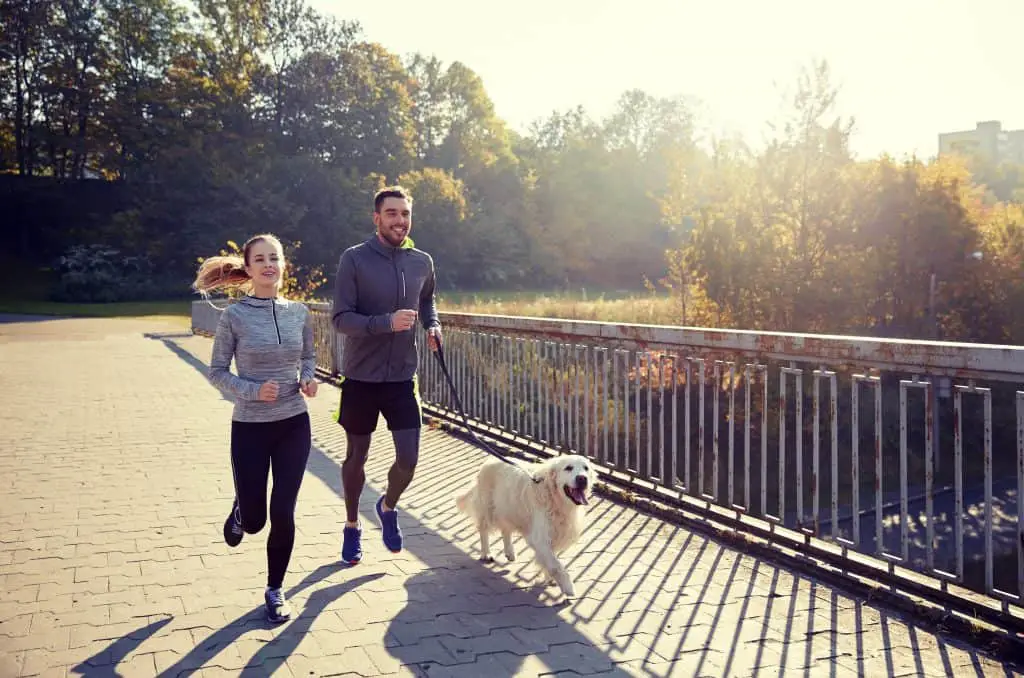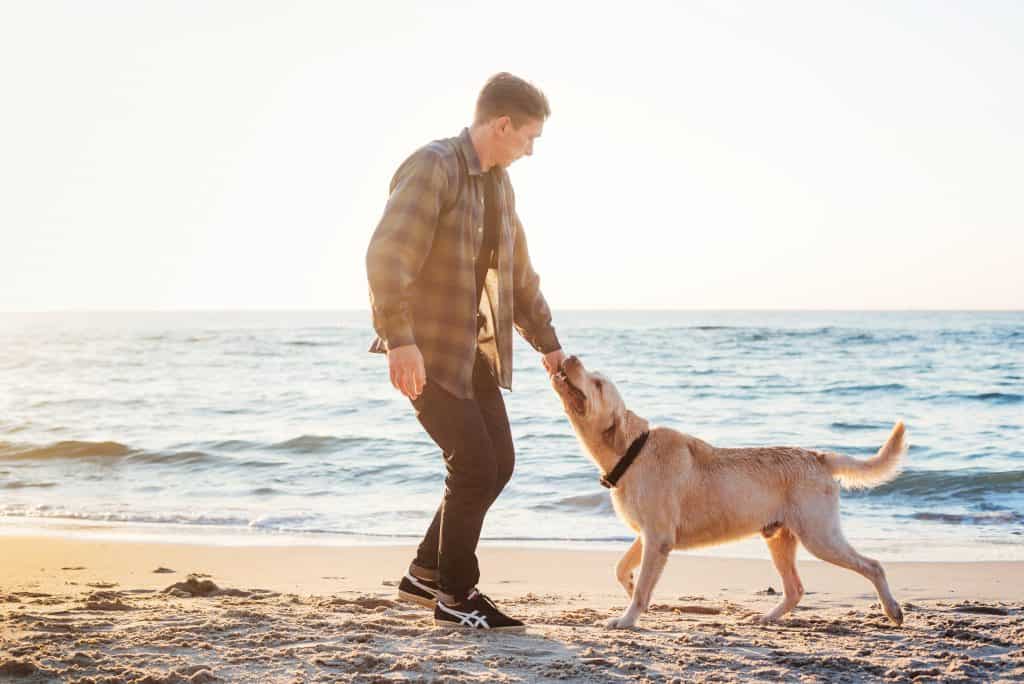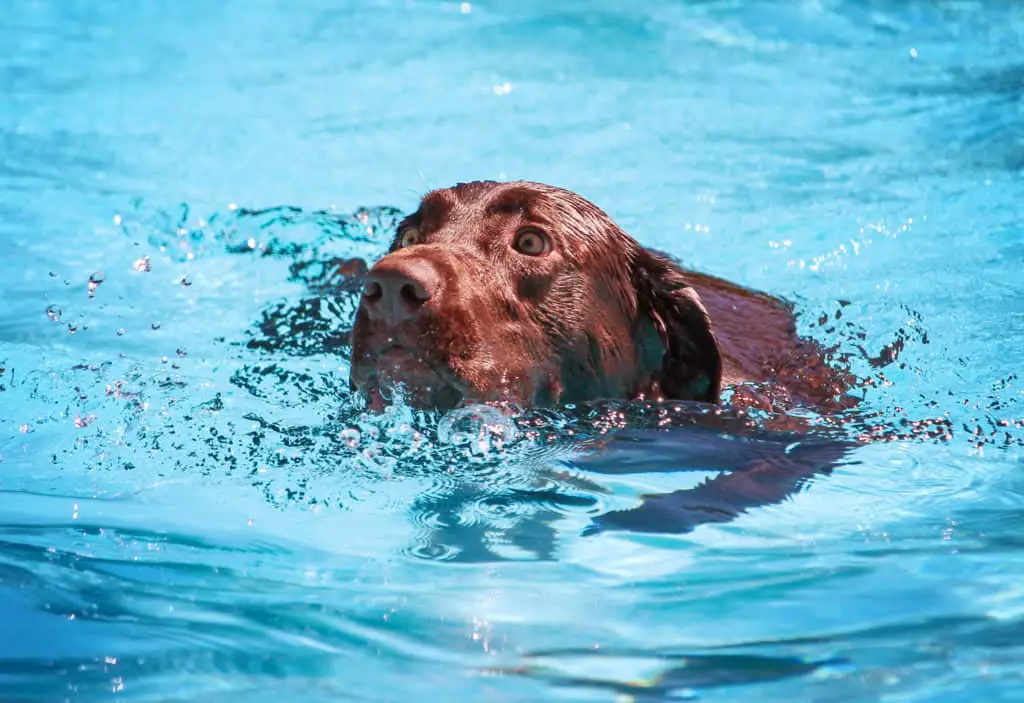
A good diet and plenty of exercises, are the cornerstones to better health, whether you are human or canine. The problem is that new dog owners don’t always know how much exercise is enough for their dogs. Too little or too much might cause health concerns. So how much exercise does a dog need? After all, not all breeds require the same amount of exercise. Also, the age of your dog is a factor to take into account when doing an exercise routine for your pet Puppies and seniors aren’t going to benefit from the same regime as an adult dog.

The amount of exercise your dog needs ultimately depends on a few crucial factors.
- The age of your dog
- Any underlying health conditions your dog may have.
- The breed of your dog
How Much Exercise Does an Adult Dog Need?
Adult dogs will do better with regular exercise every day. Ideally, we would apply the same rules to our pet dogs as we would do ourselves. A good 30 minutes of exercise, of some form, each day. The problem is that some dog owners with busy schedules have trouble making time for this. The worst thing you can do is try and make up for a long time with one massive walk. As you will see below, too much exercise can be just as damaging as too little. You want to make sure that they burn off calories and energy, tiring them out for a good sleep. But you don’t want to exhaust them and make them ill.
Great examples of exercise for adult dogs include:
- running alongside a bike
- jogging
- hiking
- games of fetch or ball games
How Much Exercise Does Puppy Need?
Puppies aren’t going to need the same amount of exercise to burn off energy. They can tire themselves out pretty well with playtime or by running around the yard. But, you are going to want to take them for walks to train them on the leash and socialize them. So, make sure to keep the walks short and don’t take them out too early.
Great examples of exercises for puppies include:
- playing with puzzles to test their brains
- short walks in the neighborhood
- games of fetch
- games of tug of war

How Much Exercise Does an Elderly Dog Need?
As our dogs get older, their abilities and medical needs will alter. We have to adapt exercise regimes appropriately for their well-being. Reduce the distance as needed and look for less strenuous activities.
Great examples of exercises for seniors include:
- swimming
- gentle walks outside
- walks on a treadmill indoors
How To Exercise Your Dog
Change up the activities as needed.
It might be a good idea to not only change the length of time exercising each day but also change the activities. This could also be helpful for those dogs that develop health conditions as they age, such as joint problems. A long walk through town on hard surfaces isn’t going to be as beneficial for older dogs. However, they might appreciate the chance to go swimming for a little while. This hydrotherapy, whether in a pool or a lake, is more gentle on the joints. Puppies will appreciate shorter, sharper bursts of playtime. But, that doesn’t mean that adult dogs won’t enjoy games of fetch or Frisbee too.
How to exercise your dog indoors.
On that note, don’t overlook the benefits of indoor exercise if your pet is struggling to stay fit or you can’t take them out as much as you need to right now. A flight of stairs can be a good physical challenge for your dog for better flexibility and coordination. You can play gentle games of fetch, hide and seek and tug or war in the right space. Homes with big enough living areas could also play host to agility or obedience games. Finally, don’t forget about the potential for hydrotherapy in the bathtub.
Different breeds also have different requirements.
One consideration is the size of your breed. A larger dog, especially a more muscular breed, is more likely to need to burn off more energy. Some dogs are naturally more active, such as shepherds and collies, and will need some more activity within the home. Dogs with shorter legs, like corgis and Basset Hounds, can’t go too far and are at greater risk of joint issues with strenuous activity. Dachshunds shouldn’t jump because of their long spines.
There are undoubtedly many more breeds with specific issues and potential conditions that could affect your dog’s exercise regime. It is, therefore, recommendable to consult a vet for the best information and guidance for your pet.

Health problems from not exercising
There are potential health risks involved in not giving your dog enough exercise. If they don’t get n adequate amount for their breed, age, and current condition, they could end up the problems related to one or more of the following.
- Their weight
- Their muscles and joints
- Their organ health
- The condition of their nails.
Weight gain:
We all know the story – if we eat more calories than we burn we will see a difference in our waistlines. The same is true for dogs and it doesn’t take much for them to become overweight. The problem is worse for breeds with a tendency to over-eat.
Muscle and joint issues:
If your dogs don’t use their joints as they exercise, they might end up with pain, stiffness, and mobility issues. This could be problematic for breeds that already have a history of joint problems. Keep them moving so you don’t have to rely on supplements. Similarly, inactivity could lead to muscle wastage and a lack of strength.
Organ health:
This is a bit of a generalization, but you would be surprised at how organ function is improved with good exercise. A good cardio workout should help with heart strength and lung capacity. Dogs can also improve digestive and bowel health through exercise. This could help older dogs that aren’t so regular anymore.
The condition of their nails:
Finally, if you hate clipping your dog’s nails because they get so overgrown, they might need longer walks outside. Nails should wear down to a better length if dogs spend enough time outside. Dogs that spend too much time inside could end up with brittle, overgrown nails that are difficult to manage.

Be careful not to overexercise your dog either.
With all that said, we can’t overlook the risks of giving dogs too much exercise. For example, you might be a keen walker or jogger that can handle 4 miles a day. But, your canine companion might not be built to travel that distance. Overexertion could lead to issues with the following
- Their joints
- Their muscles
- Their paws
- Behavioral changes
Joint problems:
Dogs put about 60% of their body weight down on their wrists and ankles as they walk. These repetitive motions can lead to some wear and sprains in those joints. Too much exercise can lead to damage that might not be apparent until your pet begins to limp
Muscle pain:
If you have ever walked the extra mile on your weekend walk in the countryside, chances are that you have felt it the next day in your legs. Your dogs might feel something similar if they walk too far or play too much. The problem is that many dogs are so keen to play and to please that they can continue through the pain and won’t show obvious signs. Over time, this can lead to damage.
Damaged paws:
It isn’t just a dog’s muscles that can incur damage. Their paw pads can also become sore and tender if they walk too far. Again, we all know how rough and blistered feet can get – and we’re wearing comfortable shoes and socks!
Behavioral changes:
Finally, it is also worth keeping an eye on their behavior. If you notice that your pet struggles to get out of their bed and doesn’t show enthusiasm for a walk, you might have pushed them too far the day before. Or they might flat-out refuse to walk further while outside.

Related Post: Hiking with a Labrador Retriever
Dogs can collapse when overexerted on walks.
The issues above can be gradual changes that occur over a longer period of overexertion. But, there are additional short-term issues to consider. Your dog may show signs of ill health during the walk or run and risk collapsing. Heatstroke is a big problem in the summer. We don’t always appreciate what it is like for dogs to walk on sidewalks in their fur coats in the hottest months. They might stop, show signs of excessive panting or even collapse. You must find shade and water for your dog.
Create an exercise regime that works for your pet.
It is easy to generalize about the best options for adults, puppies, or seniors, or give rough guides on how much exercise a dog needs to be based on breed. The truth is that each dog will have its own needs based on its breed, age health, and living conditions. You have to make the regime to your pet’s requirements and make changes where necessary. If you can do this with some varied exercises and efficient health monitoring, your dog should be fit, strong, and happy.
If you want to find the best pet insurance for your labrador, click here
Sources:


